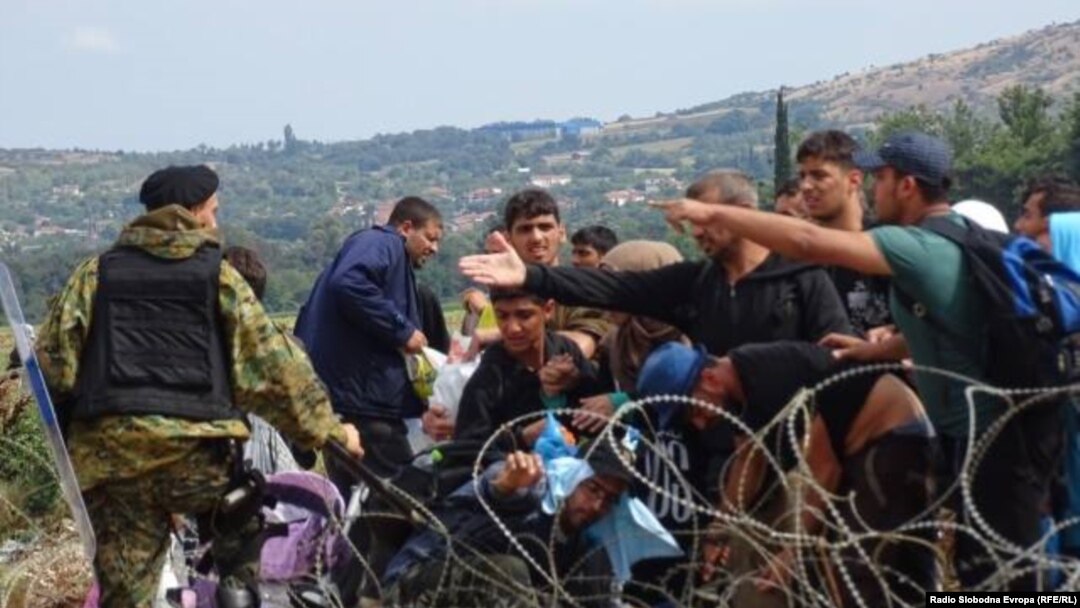At least 2,000 migrants are estimated to have rushed from Greece into Macedonia on August 22, overwhelming Macedonian police trying to block them from entering.
Several people were reported injured in the chaos on the Greek-Macedonian border, where thousands of migrants and refugees -- mainly from Syria -- are gathering in an attempt to go north to EU member countries.
Macedonian police had reported earlier that the situation was under control along the border, and were allowing small groups of migrants -- many with children -- to cross the border.
A first train carrying 300 migrants left early in the morning on August 22 from the railway station in the Macedonian town of Gevgelija to the village of Tabanovce on the border with Serbia.
Several thousand migrants spent the night in an area between the Greek and Macedonian borders after Macedonian police closed the border, in response to huge numbers of refugees and other migrants trying to enter the country.
Employees at the railway station said that several additional trains were also scheduled to take migrants throughout the day.
Representatives from the UN refugee agency (UNHCR) have said that, due to heavy rains, the Macedonian police allowed a large group of migrants to cross the border last night.
Several thousand migrants spent the night in an area between the Greek and Macedonian borders after Macedonian police closed the border, in response to huge numbers of refugees and other migrants trying to enter the country.
Those who were not allowed to cross, including many women and children, spent the rainy and chilly night in the open.
The United Nations has voiced concern after Macedonian riot police used force, including teargas, to disperse refugees and other migrants trying to enter from Greece on August 21.
WATCH: Migrants Teargassed At Greek-Macedonian Border
Your browser doesn’t support HTML5
Migrants Teargassed At Greek-Macedonian Border
The government declared a state of emergency on August 20 in response to the overwhelming influx of people.
Macedonia is a major transit country for people leaving Syria, Afghanistan, and elsewhere with the goal of reaching the western part of the European Union.


